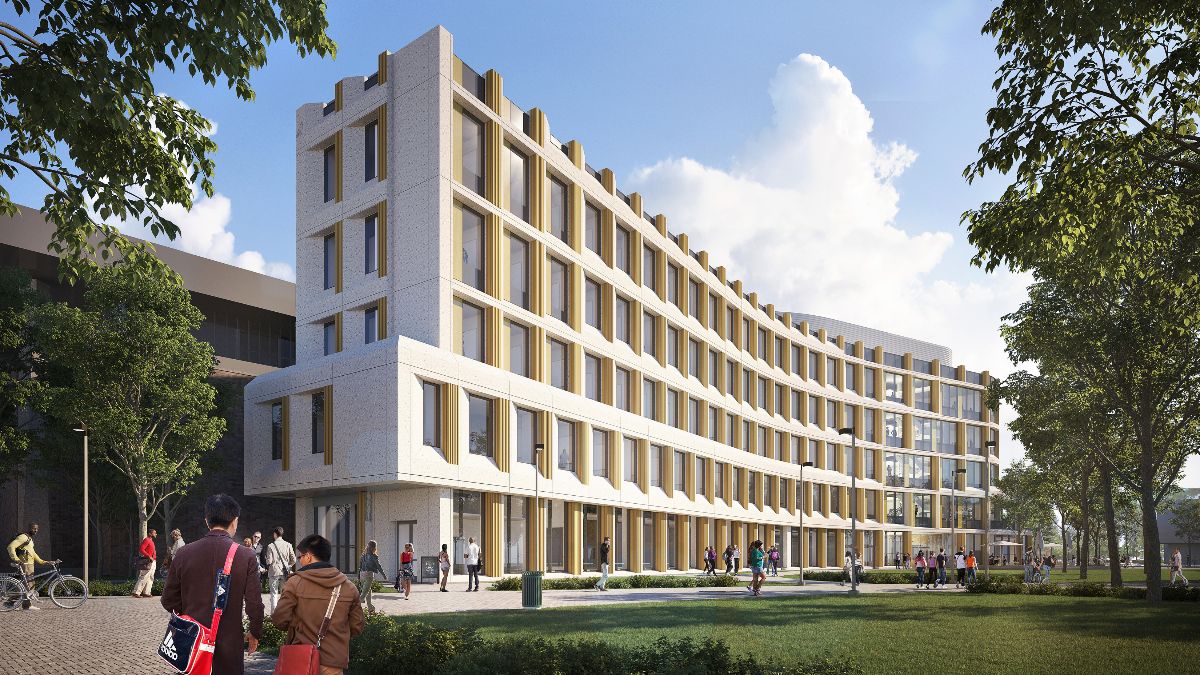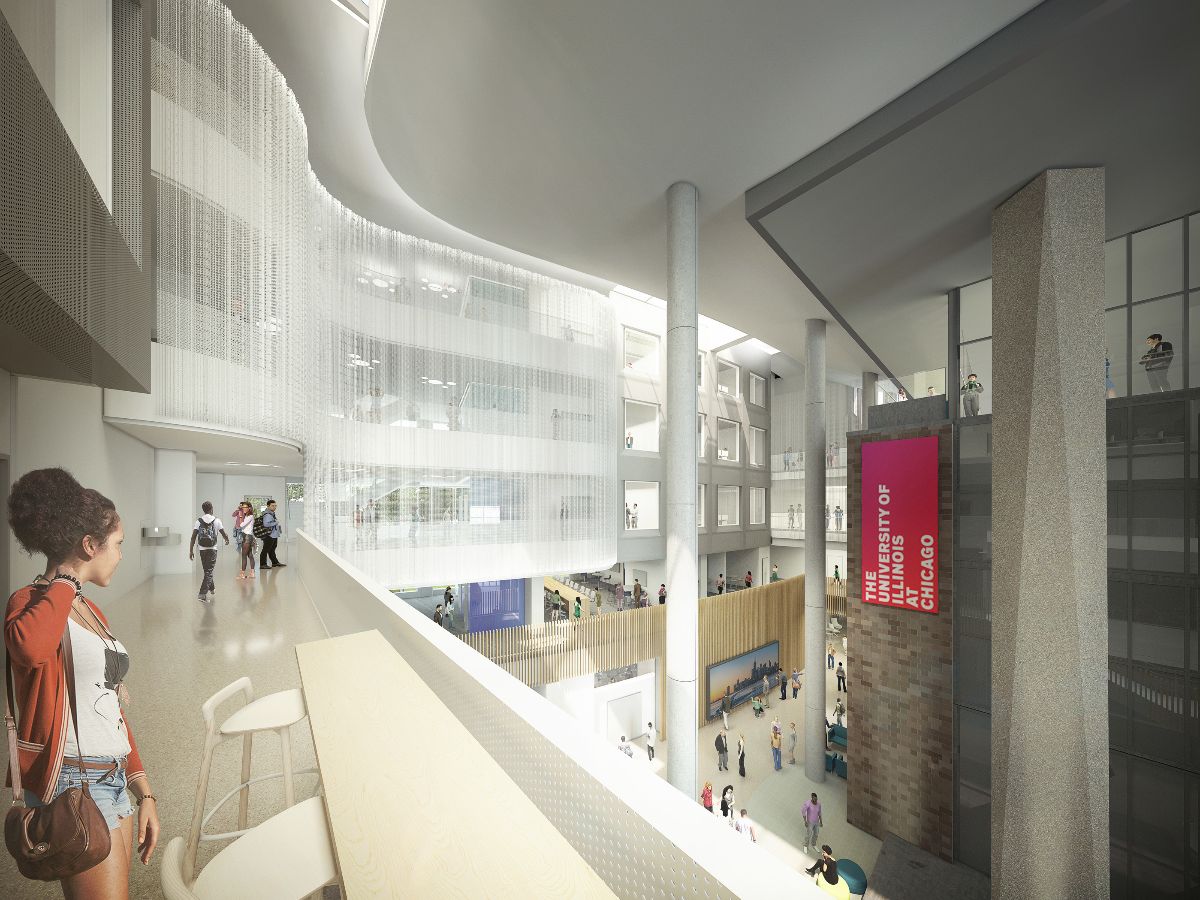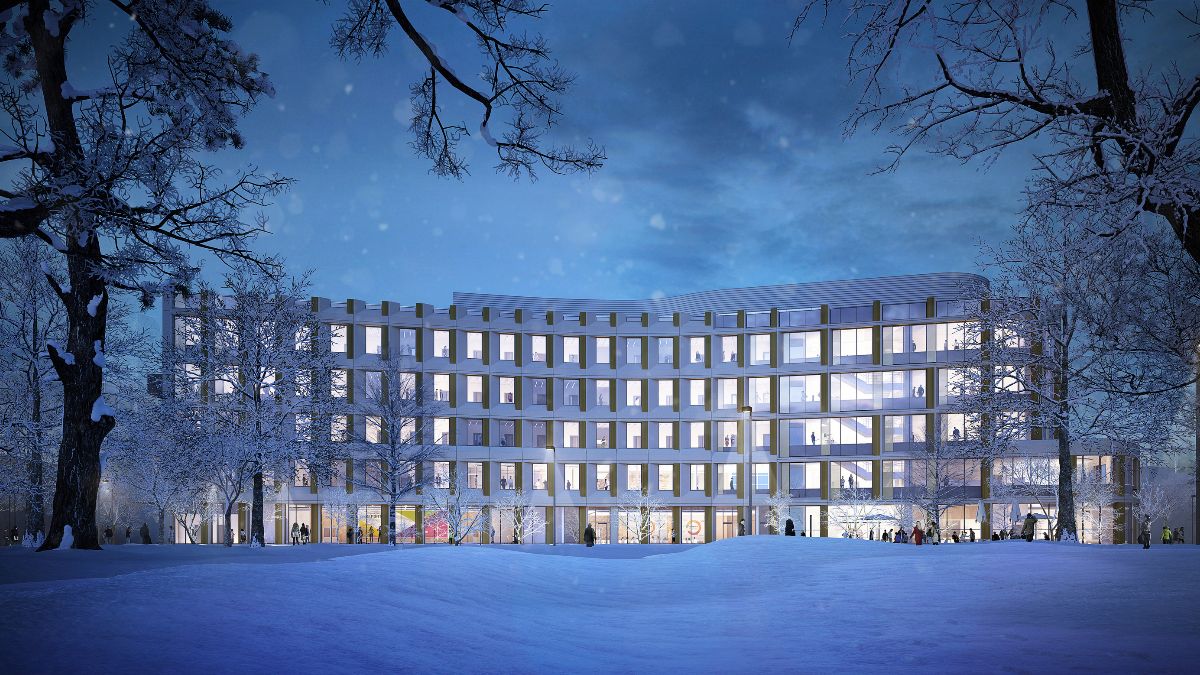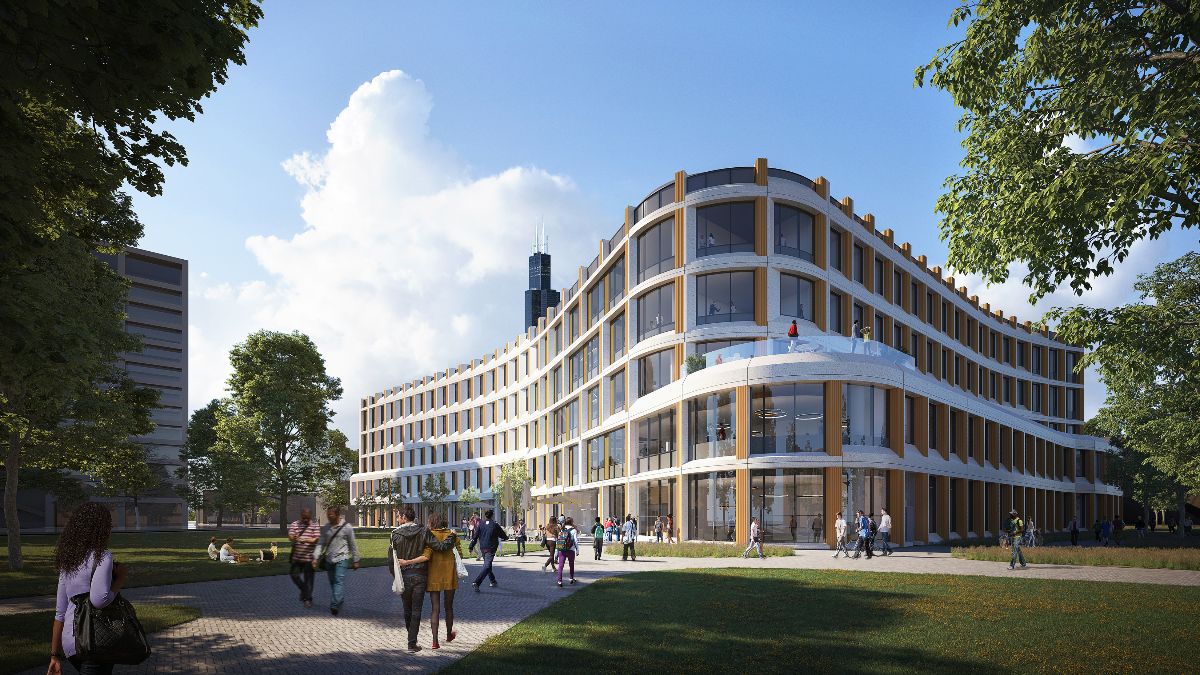The Computer Design, Research, and Learning Center (CDRLC) at the University of Illinois Chicago (UIC) will establish a new front door for technology in downtown Chicago. The building, designed by LMN Architects in collaboration with Booth Hansen, will be located at a unique, prominent site on campus and will celebrate the natural setting and organic form of the Memorial Grove.
The 135,000-sf facility will consolidate the currently fragmented Computer & Science Department in a new home and co-locate it with a large cluster of university-administered classrooms at the heart of the east campus. The CDRLC is designed to be a welcoming, inclusive, and inviting space for the rapidly growing student body.

It will create a hub for both engineering and computer science that includes research areas comprised of faculty offices, collaboration areas, dry lab, and specialty lab; administrative and student affairs office spaces; collaborative teaching and learning spaces; an undergraduate learning and community center; and a flexible events room. All of these spaces will be stitched together by a five-story daylight atrium.

Together with the existing lab building, the new CDRLC will create a public atrium for social interactions with visual and physical connections to all floors. The atrium will be porous and dynamic with connections to the campus and the community, honoring the past and looking to the future. Reflecting a complex organization of requirements, the building will prompt students to cross paths with one another and enhance intellectual exchange. A new geo-thermal farm will be included in the Memorial Grove.
The CDRLC, which has been designed to achieve LEED Gold certification, will be delivered on an accelerated schedule to see the demands of the department.

Related Stories
| Aug 11, 2010
Living and Learning Center, Massachusetts College of Pharmacy & Health Sciences
From its humble beginnings as a tiny pharmaceutical college founded by 14 Boston pharmacists, the Massachusetts College of Pharmacy & Health Sciences has grown to become the largest school of its kind in the U.S. For more than 175 years, MCPHS operated solely in Boston, on a quaint, 2,500-student campus in the heart of the city's famed Longwood Medical and Academic Area.
| Aug 11, 2010
Giants 300 University Report
University construction spending is 13% higher than a year ago—mostly for residence halls and infrastructure on public campuses—and is expected to slip less than 5% over the next two years. However, the value of starts dropped about 10% in recent months and will not return to the 2007–08 peak for about two years.
| Aug 11, 2010
Team Tames Impossible Site
Rensselaer Polytechnic Institute, the nation's oldest technology university, has long prided itself on its state-of-the-art design and engineering curriculum. Several years ago, to call attention to its equally estimable media and performing arts programs, RPI commissioned British architect Sir Nicholas Grimshaw to design the Curtis R.
| Aug 11, 2010
Setting the Green Standard For Community Colleges
“Ohlone College Newark Campus Is the Greenest College in the World!” That bold statement was the official tagline of the festivities surrounding the August 2008 grand opening of Ohlone College's LEED Platinum Newark (Calif.) Center for Health Sciences and Technology. The 130,000-sf, $58 million community college facility stacks up against some of the greenest college buildings in th...
| Aug 11, 2010
University of Arizona College of Medicine
The hope was that a complete restoration and modernization would bring life back to three neoclassic beauties that formerly served as Phoenix Union High School—but time had not treated them kindly. Built in 1911, one year before Arizona became the country's 48th state, the historic high school buildings endured nearly a century of wear and tear and suffered major water damage and years of...
| Aug 11, 2010
Cronkite Communication School Speaks to Phoenix Redevelopment
The city of Phoenix has sprawling suburbs, but its outward expansion caused the downtown core to stagnate—a problem not uncommon to other major metropolitan areas. Reviving the city became a hotbed issue for Mayor Phil Gordon, who envisioned a vibrant downtown that offered opportunities for living, working, learning, and playing.







